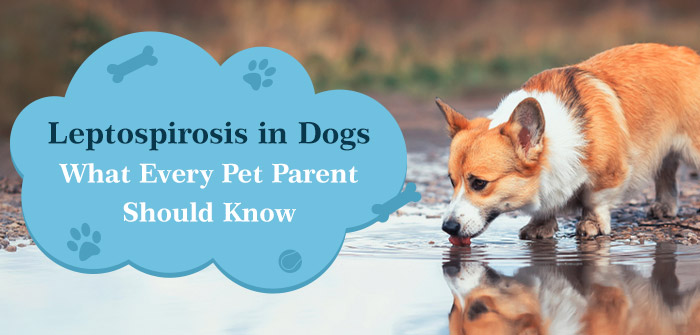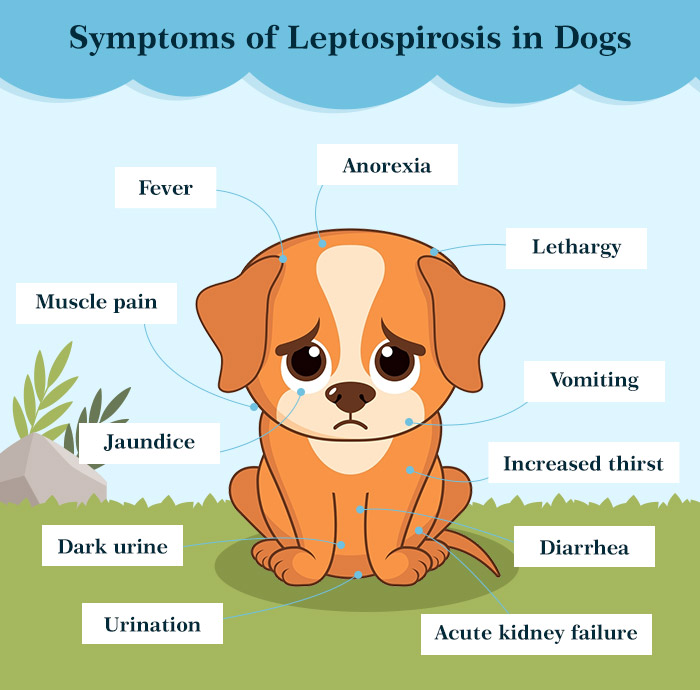Leptospirosis in Dogs: What Every Pet Parent Should Know
Leptospirosis is a bacterial disease that poses a significant health risk to both pets and their owners. Understanding the symptoms, causes, and treatments of leptospirosis is crucial for pet owners to protect their furry companions, as it is a zoonotic disease, meaning it can be transmitted to humans and other animals. In this comprehensive guide, we’ll delve into the details of leptospirosis in dogs, shedding light on this potentially serious condition.
What is Leptospirosis?
Leptospirosis is caused by a group of bacteria called Leptospira. These bacteria are typically found in soil and water all around the world. Dogs can become infected with leptospirosis through contact with contaminated water, soil, or the urine of infected animals, such as rodents.
Humans and other animals can get infected with this disease through an infected dog’s urine or via water contaminated with this urine. The bacteria can penetrate into healthy hosts through damaged skin or intact mucosa such as the nose or mouth. As the disease is easy to spread, potentially serious, and life-threatening, it puts both animals and humans at risk.
Symptoms of Leptospirosis in Dogs
The symptoms of leptospirosis in dogs can vary widely, ranging from mild to severe. Common signs of leptospirosis may include:
- Fever
- Muscle pain
- Vomiting
- Diarrhea
- Lethargy
- Jaundice
- Dark urine
- Urination
- Increased thirst
- Anorexia
- Acute kidney failure
Additional clinical symptoms include bleeding under the skin, bleeding in the lungs, respiratory problems, liver damage, etc.
Causes of Leptospirosis
Leptospirosis is primarily transmitted through contact with the urine of infected animals or contaminated water and soil. Dogs are at risk of exposure to the bacteria during outdoor activities such as hiking, swimming, or hunting. Additionally, leptospirosis can be transmitted from one dog to another through direct contact with infected urine or tissues.
Diagnosis of Leptospirosis
Leptospirosis is difficult to diagnose, as the symptoms resemble many other health problems. If leptospirosis is suspected, a veterinarian will recommend diagnostic tests such as blood and urine examination. Other than that, he or she may also recommend chest and abdominal X-rays to check for effects on the lungs and kidneys, as Leptospira notably affects these organs. A positive Leptospirosis case is confirmed by a PCR assay, which checks for the presence of the DNA of Leptospira bacteria.
Treatment of Leptospirosis
Treatment for leptospirosis typically involves the following:
- Supportive care:
A veterinarian can recommend supportive care measures to manage the individual symptoms exhibited by the infected host. This may include electrolyte supplementation for rehydration and diarrhea treatment, appetite stimulants to cure the loss of appetite, painkiller medicines to manage muscle pain, and kidney or pulmonary support medicines to treat the underlying symptoms.
- Antimicrobial treatment:
While supportive measures help tackle the symptoms, antibiotics would be required to eliminate the bacterial infection. Dogs infected with leptospirosis can be treated with antibiotics like doxycycline or penicillin. Initial recommendations are to treat them with doxycycline orally for 14 days.
In severe cases, hospitalization may be required. Timely treatment is the key in case of Leptospirosis infections, as delays in the treatment or diagnosis may lead to significant organ damage and blood clots.
Prevention of Leptospirosis
Leptospirosis is a zoonotic disease. This means it can be spread to other animals and pet owners, which makes the prevention of the disease extremely crucial. Preventing leptospirosis in dogs involves several key measures:
1. Vaccination: Vaccination against leptospirosis is an essential preventive measure. Consult with your veterinarian to ensure your dog is up to date on their vaccinations.
2. Avoiding contaminated water: Minimize your dog’s exposure to stagnant or contaminated water sources, especially in areas where leptospirosis is known to be prevalent.
3. Isolated urination areas: As the bacteria spread via urine, separate urination areas should be designated for infected dogs. These areas should be cleaned with powerful disinfectants regularly.
Conclusion
Leptospirosis is a potentially serious bacterial disease that can affect dogs, posing health risks to both pets and humans. Recognizing the symptoms, understanding the causes, and taking preventive measures are crucial for safeguarding the well-being of our canine companions. By staying informed and working closely with a veterinarian, pet owners can help protect their dogs from the threat of leptospirosis.



